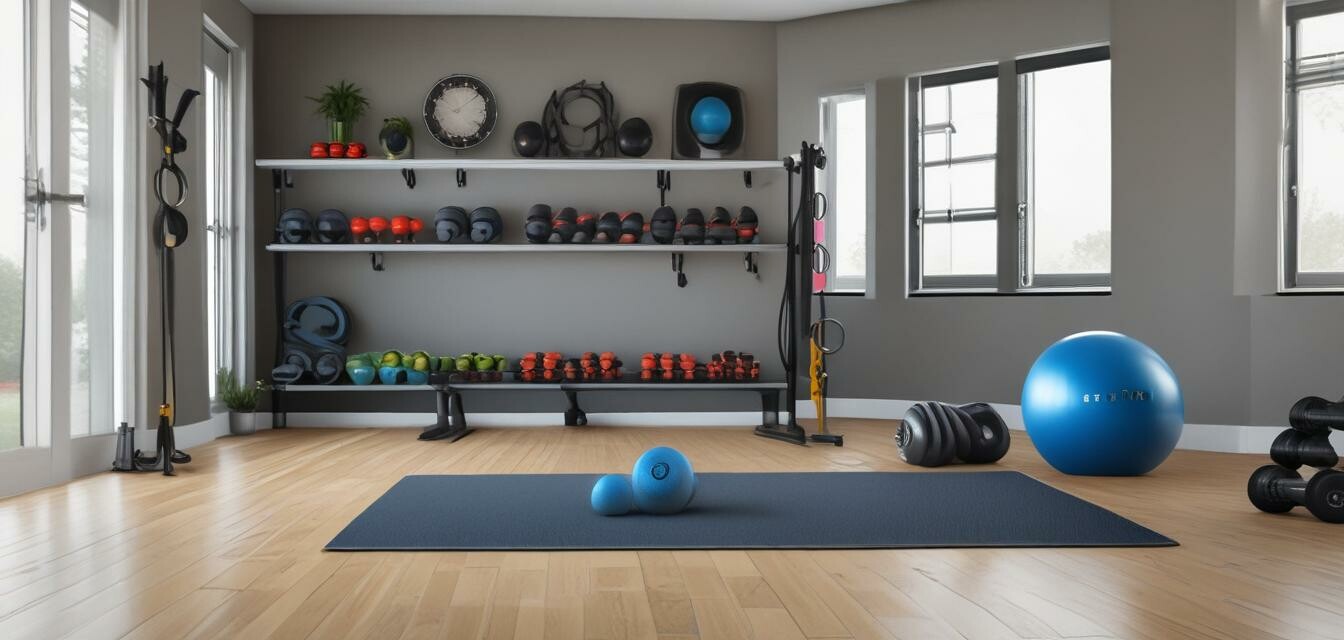
Comparing Home Gym Essentials for Your Space
- Consider your available space when selecting gym essentials.
- Quality and functionality are key aspects of home gym equipment.
- Choosing the right workout gear can enhance your fitness experience.
- Modular and multi-functional equipment can save space.
- Evaluate your workout routine and goals to make informed choices.
Setting up a home gym can be an exciting yet daunting task. With numerous options available, it's essential to compare and select the right home gym essentials that fit both your space and workout routine. This guide will help you navigate through different equipment categories, focusing on quality and functionality to enhance your fitness journey.
Why create a home gym?
Having a home gym provides convenience and flexibility to work out whenever it suits your schedule. Plus, it allows you to customize your training environment to suit your personal preferences. Let's explore key categories of home gym essentials that can fit into your unique space.
Types of home gym essentials
| Category | Description | Key Features |
|---|---|---|
| Dumbbells | Free weights for strength training | Adjustable weights, compact storage |
| Resistance Bands | Versatile tools for strength and flexibility | Lightweight, portable, various resistances |
| Yoga Mats | Essential for yoga and floor workouts | Non-slip surface, cushioned support |
| Stability Balls | Improves core strength and stability | Inflatable, various sizes, multipurpose |
| Cardio Equipment | Machines for cardiovascular exercises | Foldable or compact designs, tech features |
Evaluating your space
Before purchasing equipment, assess the area you have available for your home gym. Take note of the following:
- Space dimensions
- Flooring type
- Ventilation and lighting
- Your preferred workout style
Comparing styles and sizes
Different equipment styles and sizes can greatly impact how you utilize your space and achieve your fitness goals. Below is a comparison of popular home gym essentials:
| Equipment | Size | Weight Range | Best For |
|---|---|---|---|
| Adjustable Dumbbells | Compact | 5-50 lbs | Strength Training |
| Resistance Bands | Portable | N/A | Full Body Workouts |
| Yoga Mat | Standard | N/A | Yoga and Stretching |
| Stability Ball | Standard | N/A | Core Exercises |
| Foldable Treadmill | Compact | N/A | Cardio Workouts |
Key features to look for
When selecting home gym essentials, consider the following key features to ensure you choose wisely:
- Durability: Look for high-quality materials.
- Space-saving design: Opt for equipment that can be stored easily.
- Multi-functionality: Choose equipment that offers multiple exercises.
- Weight options: Ensure weight ranges match your fitness level.
- Comfort: Choose items that are comfortable to use.
Understanding your fitness goals
Your fitness goals should dictate the type of equipment you invest in. If you're focused on strength training, look for strength training equipment. If your focus is on flexibility or recovery, consider equipment such as yoga mats or stability balls. Below are some considerations to help align your equipment choices with your goals:
- Weight Loss: Cardio equipment and resistance bands.
- Muscle Gain: Dumbbells and adjustable weight systems.
- Flexibility: Yoga mats and balance equipment.
- Overall Fitness: A mix of cardio and strength training gear.
Conclusion
Creating a functional home gym tailored to your space and workout routine doesn't have to be overwhelming. By comparing different home gym essentials and keeping your fitness goals in mind, you can find quality options that enhance your workouts. Consider incorporating a blend of equipment for a well-rounded fitness experience and enjoy the convenience of working out in your own space.
Pros
- Convenience of working out at home.
- Customization to fit personal preferences.
- Can adjust space and equipment as needed.
- Cost-effective in the long run compared to gym memberships.
Cons
- Initial investment can be high for quality equipment.
- Limited variety compared to commercial gyms.
- Requires motivation to maintain a consistent workout schedule.
Additional resources
For further exploration and recommendations, check out:
- Fitness buying guides for informed choices.
- Expert tips and advice on fitness.
- Outdoor fitness gear for alternative workouts.
- Smart fitness gadgets to enhance performance.
- Latest fitness news and trends.